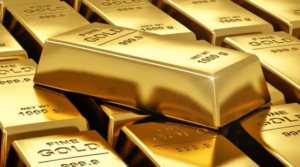
The Sukha Balka mine (Kryvyi Rih, Dnipropetrovsk region), part of Alexander Yaroslavsky’s DCH group, is commissioning a new iron ore deposit block, Golovnyi, at the Yuvileina mine.
According to a report in the DCH Steel corporate newspaper on Thursday, preparations for the new production capacity at the mine have been completed.
It is specified that in early November, a specialized commission consisting of leading specialists of the enterprise and representatives of the State Labor Service of Ukraine signed an act on the commissioning of mining block 13-17. It is located in the Golovnoy deposit at a depth of 1,420 meters, sub-level 3A.
The block’s projected reserves amount to 221,300 tons of ore with an iron content of 60.75%.
“This is a large block that we have been preparing for production for almost a year, and its reserves will be enough for six months of stable operation of the enterprise,” said Mykola Puntus, chief engineer of the Yuvileina mine.
It is also reported that at the Tsentralna mine, the drainage pond at the -1260 m and -1340 m levels has been repaired. The diameter of the new pipeline between these underground levels is 325 mm. The Tsentralna mine is part of the Yuvileina mine. A drainage pond is a hydraulic engineering structure designed to collect water and is a critical part of the mine drainage system.
The Sukha Balka mine is one of the leading enterprises in the mining industry in Ukraine. It extracts iron ore using underground mining methods. The mine includes the Yuvileina and Frunze mines.
The DCH Group acquired the mine from the Evraz Group in May 2017.
DCH, Mine, ORE, SUKHA BALKA, Yuvileina

The housing price index in Ukraine for July-September 2025 stands at 112%, while for the same period in 2024, the figure was 111.7%, according to the State Statistics Service (SSS).
According to its data, in the primary market, housing prices slowed their growth to 12.8% in the third quarter of 2025, compared to 14.1% in the third quarter of last year. One-room apartments saw the highest price increase — 13.3%. The price increase for two-room apartments was 13.3%, and for three-room apartments – 11.7%.
In contrast, prices in the secondary market accelerated their growth to 11.5% in July-September 2025, compared to 10.5% in the same period of 2024. One-room apartments rose in price by 12.5%, and two- and three-room apartments by 11.4%.
According to the statistics agency, compared to the previous quarter, housing prices rose by 0.3%, with the primary market rising by 0.2% and the secondary market by 0.3%.
According to the State Statistics Service, in the third quarter of 2025, prices in the primary market rose by 9.1% for one-room apartments compared to the fourth quarter of 2024, by 8% for two-room apartments, and by 7.4% for three-room apartments. In the secondary market, they rose by 9.1%, 7.8%, and 7.6%, respectively.
Overall, housing prices rose by 12.7% in the first three quarters compared to the same period last year. In the primary market, the increase was 14.8%, and in the secondary market, it was 11.6%.
As reported, according to the State Statistics Service, housing prices in 2024 rose by 12.7%.
The State Statistics Service noted that the figures do not include temporarily occupied territories and parts of territories where hostilities are (were) ongoing.

Das Volumen der landwirtschaftlichen Produktion ging im Zeitraum Januar bis Oktober 2025 gegenüber dem gleichen Zeitraum des Jahres 2024 um 12,4 % zurück, teilte das Staatliche Statistikamt mit.
So lag der Index der landwirtschaftlichen Produktion in der Ukraine nach den Ergebnissen der ersten zehn Monate dieses Jahres bei 87,6 % gegenüber Januar bis Oktober des Vorjahres. Insbesondere erreichte der Index für pflanzliche Produkte 85,7 % und für tierische Produkte 96,5 %.
Etwas größere Verluste verzeichneten landwirtschaftliche Betriebe, deren Produktion 85,1 % des Vorjahresniveaus betrug. Dabei erreichte der Index für pflanzliche Erzeugnisse 82,5 % und für tierische Erzeugnisse 99,0 %.
Gleichzeitig ist der Indikator in den privaten Haushalten besser – 93,6 %. Bei pflanzlichen Erzeugnissen betrug er 93,9 %, bei tierischen Erzeugnissen 92,5 %.
Ein deutlicher Rückgang der Produktion wurde in der Region Donezk verzeichnet, wo sie nur 56,6 % des Vorjahreswertes erreichte. Ein relativ deutlicher Rückgang wurde auch in den Regionen Cherson (69 %), Dnipropetrowsk (77,3 %) und Chmelnyzkyj (77,0 %) verzeichnet.
Nur eine Region verzeichnete eine positive Entwicklung. In der Region Transkarpatien betrug die Produktion landwirtschaftlicher Erzeugnisse 103,5 %. Dabei wurde ein Wachstum der pflanzlichen Produktion in der Region von +1,7 % und der tierischen Produktion von +7,2 % verzeichnet.

Poland’s PZU will invest at least PLN 4 billion in the Innovate Poland program to stimulate the development of innovative domestic companies with high potential, according to the PZU website.
“At least PLN 4 billion will be invested through private equity and venture capital funds in about 250 companies. This is the first phase of the project, conceived as a platform to which additional institutions and investors will join in the next phases to jointly scale investments,” the information emphasizes.
In addition, it is reported that the Innovate Poland concept is based on the experience of the French “Plan Tibi”, which has significantly strengthened the French market for innovative investments in recent years. The budget of the first phase of Innovate Poland is PLN 4 billion, provided by development institutions: the Polish Development Fund (PFR), Bank Gospodarstwa Krajowego (BGK), the European Investment Fund (EIF) and Powszechny Zakład Ubezpieczeń (PZU) – the first commercial partner of the project.
The program is implemented under the patronage of the Minister of Finance and Economy. Its formula is designed to allow the addition of additional institutions and investors in subsequent phases, systematically increasing the scale of financing and strengthening the economic impact of the program.
PZU ((Powszechny Zakład Ubezpieczeń Spółka Akcyjna) is a Polish insurance company, one of the largest insurance companies in Central and Eastern Europe. It offers a wide range of insurance services, including life and property insurance.

Gold prices are declining on Thursday amid the strengthening of the dollar before the publication of statistical data on the U.S. labor market. By 14:02 Q2 quotations of December gold futures on the Comex exchange fell by about 0.5% to $4061.5 per ounce.
The U.S. Department of Labor will release a report on the U.S. labor market for September at 15:30 Q2. The report is expected to show job growth of 50,000 and unemployment remaining at 4.3%, Trading Economics noted. It is published late due to the shutdown.
ICE’s DXY index, which shows the dollar’s performance against six currencies (euro, Swiss franc, yen, Canadian dollar, pound sterling and Swedish krona), added about 0.1%.
Meanwhile, analysts at UBS upgraded their forecast for gold to $4500 an ounce from $4200 an ounce by mid-2026. They believe that gold will be supported by the Federal Reserve’s easing monetary policy, as well as geopolitical uncertainty, increasing demand for protective assets.
Earlier, the Experts Club think tank presented an analysis of the world’s leading gold-producing countries in its video on Youtube channel – https://youtube.com/shorts/DWbzJ1e2tJc?si=YuRnDiu7jtfUPBR9.

On Thursday, the Chinese Ministry of Commerce said that Japanese Prime Minister Sanae Takaichi’s remarks on Taiwan had a negative impact on Sino-Japanese economic relations.
“Prime Minister Takaichi’s erroneous remarks on Taiwan, made in public, have fundamentally undermined the foundation of China-Japan relations and seriously damaged bilateral economic and trade ties,” Western media quoted ministry spokesman He Yongqian as saying.
“If the Japanese side continues to take such actions and continues to move in the wrong direction, China will resolutely take the necessary measures, and all the consequences will fall on Japan,” she promised.
The media reminds us that China is the second most important market for Japan. In 2024, according to the UN, China purchased $125 billion worth of Japanese goods, mainly industrial equipment, semiconductors, and automobiles.
In November, Takaichi said that an emergency situation around Taiwan involving the use of force could escalate into a “situation that threatens Japan’s survival”; the Kyodo news agency explained that in such a case, Tokyo could resort to its right to collective self-defense.
However, the Chinese authorities consider the Taiwan issue to be an internal matter for China and called on Takai to retract his statements. As a result, Beijing urged its citizens to avoid traveling to Japan and recommended that those wishing to study in that country reconsider their decision in light of the security situation. The Kyodo news agency also reported, citing a source, that China had informed Japan of the suspension of imports of Japanese seafood
. On Thursday, US Ambassador to Japan George Glass condemned these measures by the PRC and called them “economic coercion.” After meeting with Japanese Foreign Minister Toshimitsu Motegi, he assured that the US is committed to ensuring Japan’s defense, including the Diaoyu Islands (Japanese name: Senkaku) in the East China Sea, which are controlled by Tokyo. The islands are the subject of a territorial dispute between Japan and China.
According to Kyodo, 64-year-old Takaichi is known for her “hardline views on security.” In particular, she advocates revising Article 9 of the 1947 Japanese Constitution, which renounces militarism. She is also considered a supporter of ultra-right and nationalist views.
The Taiwan issue arose in 1949 when the People’s Republic of China was proclaimed and part of the Chinese Kuomintang party settled on the island of Taiwan, naming it the Republic of China on Taiwan. Beijing insists on the “one China principle,” according to which it is impossible to recognize both the PRC and the Republic of China on Taiwan at the same time. At the same time, some states have unofficial cultural and economic offices of Taipei.